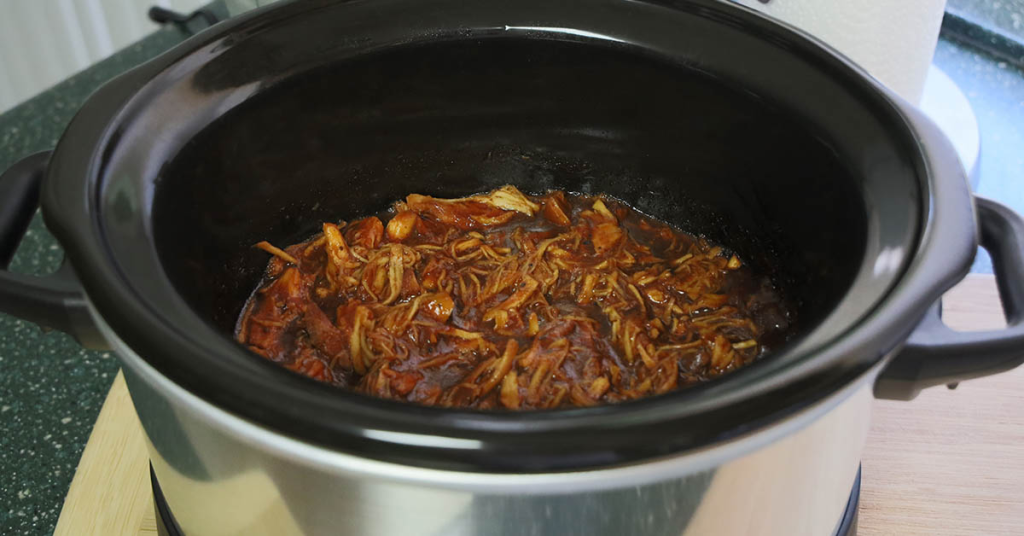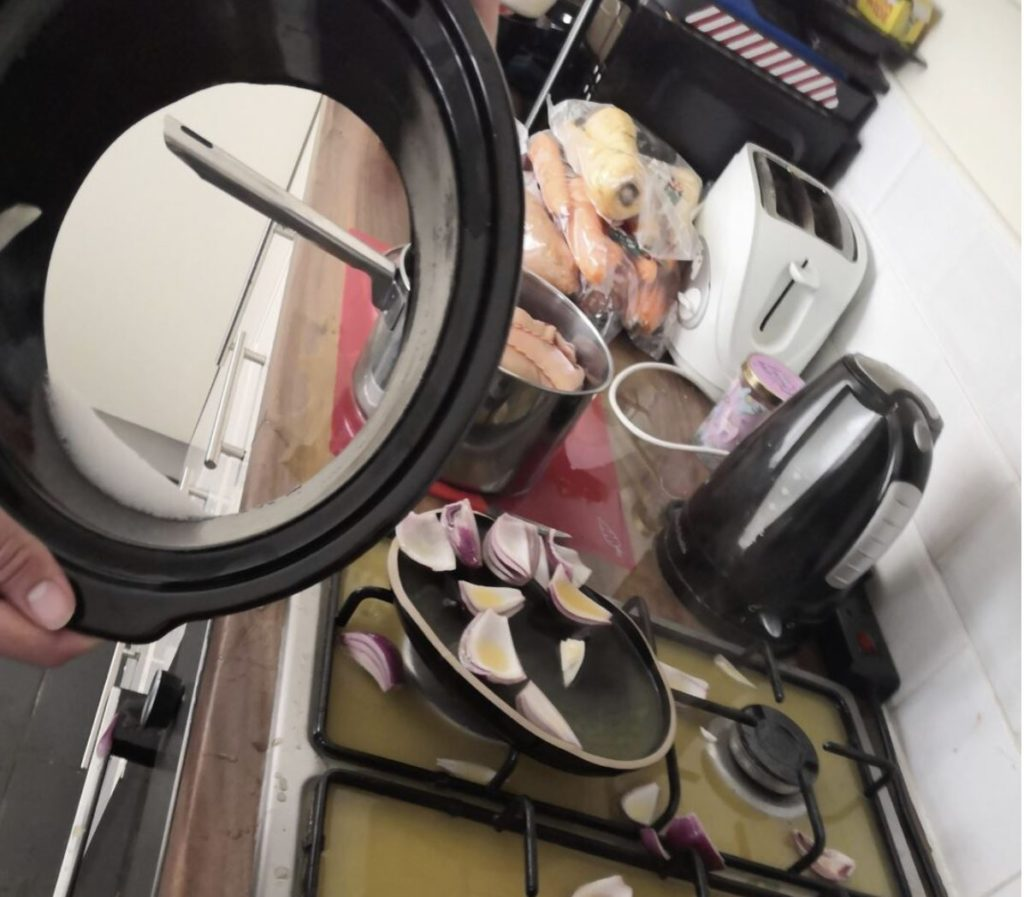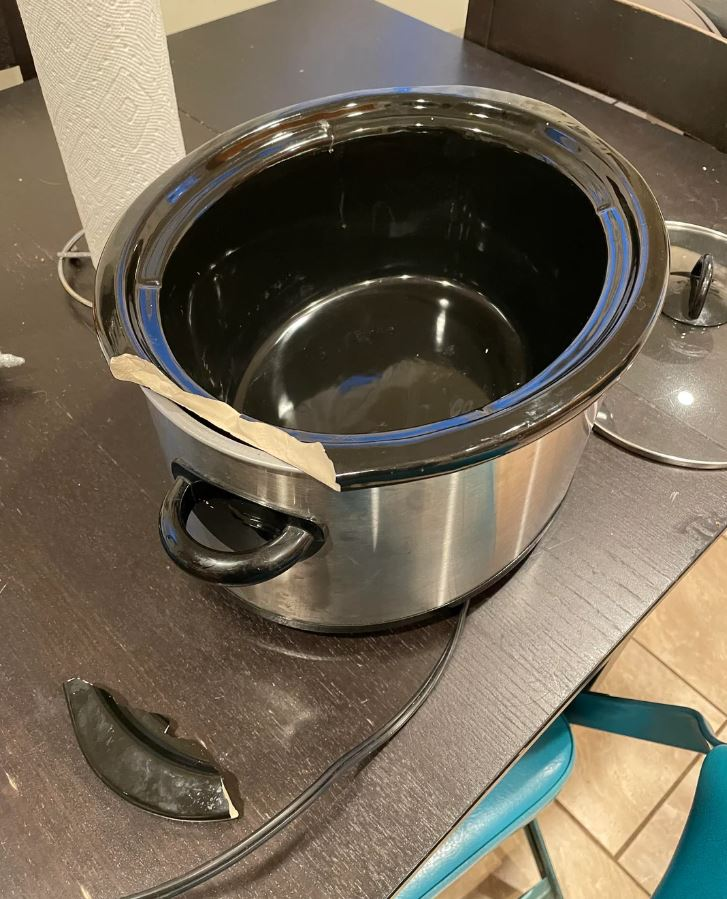A crockpot is a kitchen hero, perfect for whipping up hearty meals with minimal effort. It’s a favorite for slow-cooked recipes that fill your home with comforting aromas. But as convenient as this appliance is, there’s one thing you should never do: place your crockpot on your stovetop. While it might seem harmless, this seemingly simple act can lead to disastrous consequences. Let’s dive into why this is such a critical mistake and how to ensure your crockpot remains a safe and reliable kitchen companion.
The Crockpot Conundrum: A Lesson from a Real-Life Mishap

Recently, a concerned mom shared her harrowing experience on social media. After spending six hours slow-cooking a 15-bean chili, she decided to place her crockpot on the stovetop for an additional hour of cooking. What happened next was a kitchen nightmare—when she lifted the crockpot off the stove, the bottom fell apart, leaving a sticky mess of chili and shattered ceramic on her stovetop.
This incident isn’t an isolated one. It highlights the risks of using crockpots in ways they’re not designed for. The mom’s story sparked discussions online, with many pointing out the dangers and sharing similar experiences.
Why Crockpots and Stovetops Don’t Mix
The main issue lies in how crockpots are constructed. These appliances are specifically designed for low, consistent heat over an extended period. Their ceramic inserts, while durable for slow cooking, are not equipped to handle the rapid and high temperatures of a stovetop.
Here’s why putting a crockpot on your stovetop is a recipe for disaster:
- Ceramic Sensitivity: The ceramic material used in crockpots expands and contracts with temperature changes. A sudden increase in heat, like that from a stovetop burner, can cause the ceramic to crack or even shatter.
- Structural Fragility: Crockpots aren’t built to distribute heat from the bottom like stovetop cookware. The uneven heat distribution can lead to warping or structural failure.
- Safety Hazards: A cracked or shattered crockpot can release sharp ceramic shards, posing a risk to you, your family, and even pets. Additionally, electrical components within the crockpot may malfunction if exposed to excessive heat.
The Dangers of Misusing Your Crockpot
The consequences of using a crockpot improperly extend beyond a messy kitchen. Let’s explore some of the potential risks:
- Shattering and Explosions: Exposing a crockpot to high temperatures can cause the ceramic insert to shatter, sending sharp fragments flying. These shards can cause injuries and may be difficult to clean up entirely, posing long-term hazards.
- Electrical Malfunctions: Many crockpots have electrical components embedded in their bases. Placing them on a hot stovetop can damage these components, increasing the risk of electrical fires.
- Toxic Messes: If food spills into electrical components or onto the stovetop, it can create smoke, odors, and potential fire hazards.
Kitchen Safety: General Rules for Ceramic Cookware

Crockpots aren’t the only kitchen items vulnerable to stovetop misuse. Ceramic cookware, in general, requires careful handling. Here are some guidelines to keep in mind:
- Avoid High Heat: Most ceramic cookware isn’t designed for direct heat sources like stovetops. Always check the manufacturer’s instructions.
- Use Alternatives for Stovetop Cooking: Opt for materials like cast iron, stainless steel, or treated glass for stovetop use.
- Inspect Regularly: Chips or cracks in ceramic cookware can worsen under heat, so always inspect your dishes before use.
Safer Alternatives to Ceramic Cookware
If you love the aesthetic of ceramic but need stovetop-friendly options, consider these alternatives:
- Cast Iron: Cast iron is versatile, durable, and perfect for stovetop and oven use. Just remember to use a potholder for the handles!
- Stainless Steel: Lightweight and resistant to high temperatures, stainless steel is a reliable choice for everyday cooking.
- Treated Glass: Brands like Pyrex and Corningware offer stovetop-safe options, though they still require careful handling to avoid shattering.
- Silicone: Heat-resistant up to 500°F, silicone cookware is a great option for baking and steaming but not ideal for direct heat.
Top-Rated Cookware for 2024

For those looking to upgrade their kitchen tools, here are some highly recommended options:
- All-Clad Stainless Steel Cookware: Known for its durability and even heat distribution, it’s a favorite among home cooks and professionals alike.
- Farberware Nonstick Sets: Budget-friendly and versatile, these sets are perfect for everyday use.
- Lagostina Martellata Copper Pans: These pans combine beauty and functionality, offering excellent heat control.
- Caraway Ceramic Cookware: While not stovetop-safe, Caraway’s ceramic-coated pots and pans are a stylish choice for oven and low-heat cooking.
Final Thoughts: Prioritize Safety in the Kitchen
Your crockpot is a fantastic tool for slow cooking, but it’s essential to use it as intended. Avoid placing it on the stovetop, and always follow the manufacturer’s guidelines. By taking these precautions, you can prevent accidents, protect your family, and keep your kitchen running smoothly.
Remember, a little extra caution can save you from a lot of trouble. Stay safe, and keep cooking delicious meals without unnecessary risks.


